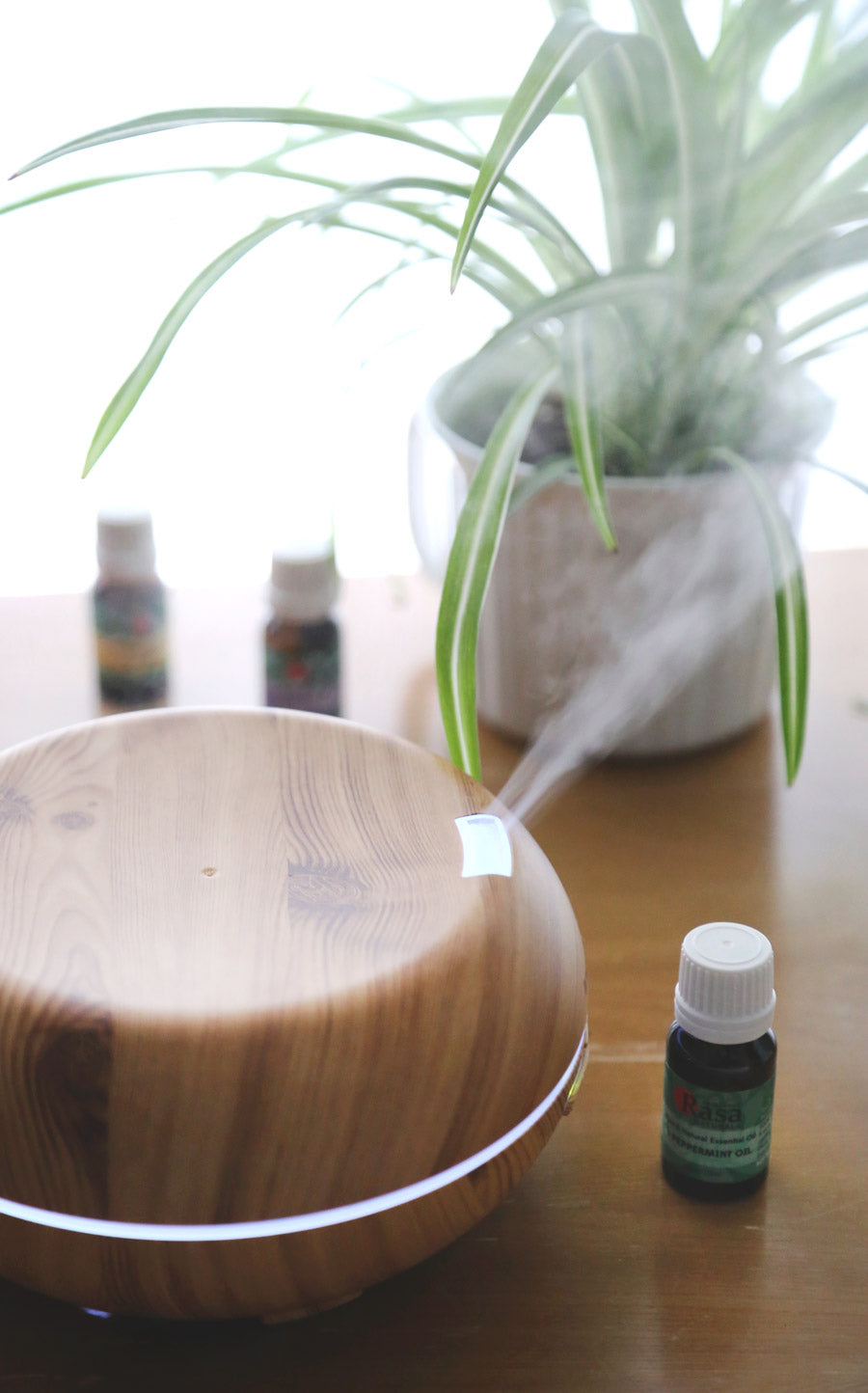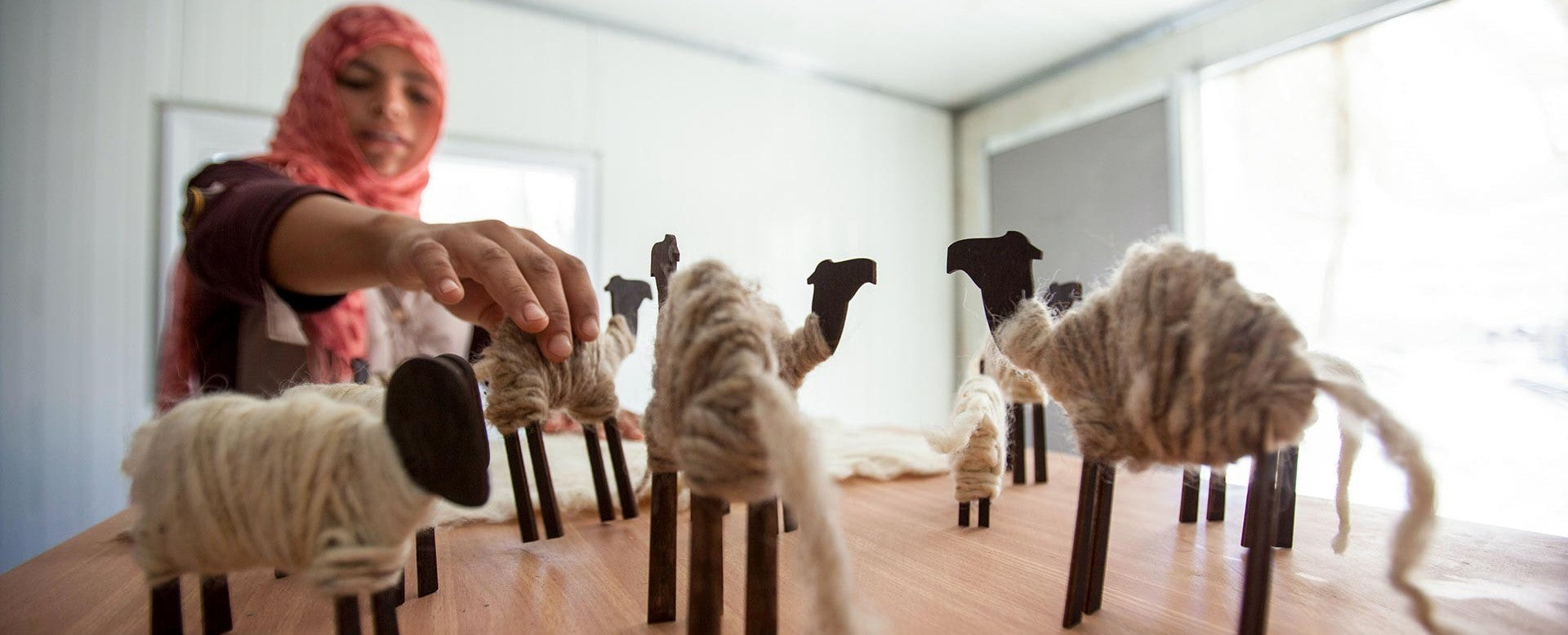Essential Oil Essentials

Fair trade essential oils are here! Ten Thousand Villages has added three essential oils to our 2017 product line. If you already use essential oils or know about their benefits, you now have a new fair trade source. Our essential oils come from Rasa, a program supported by our fair trade partner, Sasha Exports in India. The Kolkata-based workshop has its own processing and testing facilities and trains women from underprivileged communities to make hair and body care products from pure, organic and natural materials. Rasa is committed to fair trade principles of environmentally sustainable development, fair wages, equal opportunities and human rights — so you can be assured that the good these essential oils can do starts with the lives of those who make them.
If you’re new to the idea of essential oils, you may have seen or heard that these tiny bottles are a big deal in the world of holistic wellness. But what are essential oils and what do you do with them? We asked an aromatherapist, certified in the therapeutic use of aromatic plant oils, to help us get started.

What are essential oils and why should I use them?
Essential oils are distilled or expressed from plant material, and their distinctive aromatic properties can positively influence physical and mental well-being. The benefits of plants have long been known to healers in cultures around the world. Today, essential oils offer a natural alternative to pharmaceutical treatments. But, remember, natural doesn’t mean harmless. These substances pack a punch, so it’s smart to proceed with caution.
How do I use essential oils?
Essential oils should be used in external applications only and safely diluted. The bottles are small (ours are approximately 10 milliliters) because the oils are extremely concentrated. In fact, oils are generally too strong to place directly on the skin. Most bottles of essential oils are capped with something called an orifice reducer, which meters flow into the drops necessary for various preparations.

Topical application requires the use a carrier oil – unscented body lotion or coconut oil, for instance – to decrease the essential oil to a safe concentration for absorption into the skin. Alternatively, diffusion dilutes the oil with water, dispersing it into the air for inhalation. Diffuser units should use cold air only, as heat can damage the oils and their helpful properties. Portable options include personal inhalers, which look a bit like a lipstick tube, and contain a cotton pad or small vial to contain a few drops of oil, and rollerball applicators, for mixing essential oils and carrier oils and applying to small areas of skin.
A few more important safety tips
• Avoid direct contact with eyes.
• Keep out of reach of children.
• Use according to dosage guidelines.
• Store in tightly capped dark bottles in a cool dark place. Kept properly, essential oils have a shelf life of 1 to 5 years depending on their chemical composition.
Why do some essential oils cost more than others?
In the marketplace – and at Ten Thousand Villages – prices among individual essential oils vary, depending on how rare the original plant is and the process of distillation. For example, peppermint leaves are more plentiful and easier to distill into peppermint oil than the large quantity of rose petals necessary for rose oil. The purity of an essential oil will also affect the price. Some processers add synthetic ingredients and fragrances. And remember, you only use a few drops in each preparation; a little bit goes a long way.
Ten Thousand Villages stocks 100% pure lavender, lemon and peppermint essential oils.
How can they help me?
Lavender
Lavender is a common and versatile oil, making it a good entry point for an exploration into essential oils. As a gentle sedative for the central nervous system, lavender can help to reduce anxiety. In proper concentrations, it can be calming for children. Lavender also has anti-inflammatory and anti-bacterial properties. Add a few drops of lavender oil to natural aloe vera gel for an effective sunburn remedy, or mix with a carrier oil to ease a stiff or swollen joint.
Lemon
Lemon oil is mood-boosting pain reliever. Mixed with a carrier oil it can soothe a headache, but it is also has a number of household uses. Anti-bacterial and anti-viral, lemon oil features prominently in a number of natural household cleaning recipes that provide a safe alternative to harsh chemicals. Add 3 drops of lemon oil and 4 ounces of white vinegar to a spray bottle for a simple window and glass cleaner. A safety note: avoid sun exposure after topical application. Lemon oil is phototoxic: in sun or UV light, it can cause skin irritation, redness or darkening.
Peppermint
An analgesic (pain reliever) and anti-spasmodic (relaxer), peppermint oil applied with a carrier oil can aid muscle soreness and cramps. Safely inhaled, a few drops can help ease nausea and clear congestion. But menthol, the main compound in peppermint oil, is powerful. Peppermint oil should not be used on children under 30 months of age. And used with care on others.
How can I learn more?
Resources abound, and many are linked with commercial products, so be sure you know who is sponsoring what you are reading. Consider contacting a certified aromatherapist in your area and asking for some educated input. (Many massage therapist and aestheticians are certified in aromatherapy.) Look for information from an educational or professional resource, like the National Association for Holistic Aromatherapy, whose mission is to advance the knowledge of the medicinal use of aromatic plants and essential oils and to support aromatherapy as a truly holistic professional art and science.









Comments